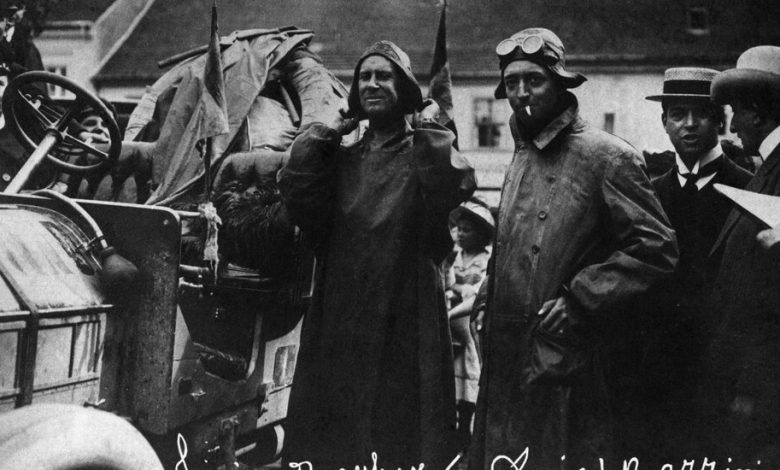1907 Was a Mad, Mad, Mad, Mad World

THE RACE TO THE FUTURE: 8,000 Miles to Paris — the Adventure That Accelerated the Twentieth Century, by Kassia St. Clair
Berkeley Heights, N.J., was once a verdant expanse of farmland and forests, but by the time I grew up there, all that had long been paved over to build suburban homes. So I spent most of my time inside, watching movies on TV.
One of my favorites was 1965’s “The Great Race,” in which Tony Curtis’s handsome hero vies with Jack Lemmon’s sneering villain in a round-the-world, old-timey car race.Although I didn’t know it at the time, that movie was based on real events, including the 1907 Peking-Paris rally, in which five drivers attempted to cover a vast distance in machines so new their very name — automobile? motor car? — hadn’t yet been decided.
Kassia St. Clair’s “The Race to the Future” is a vivid re-creation of the escapade, but the author also takes pains to demonstrate how what happened then determined the way we live now — including why the orchards of my hometown are remembered now only as street signs.
In 1907, when the French newspaper Le Matin announced that it would sponsor and publicize an 8,000-mile race from what was known as Peking (now Beijing) to Paris, automobiles were still a rare sight.
Engineers had been dreaming of a self-propelled vehicle since the dawn of the machine age, and by the end of the 19th century, scores of tinkerers and industrialists were vying to create a practical working model. Much like today’s digital engineers, inventors could envision what their machines could do before they knew how to make them do it, and were generally blind to the consequences.